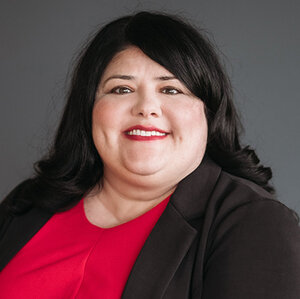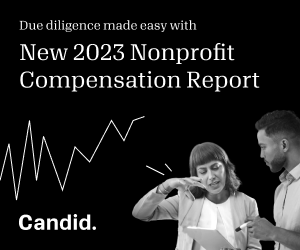A more equitable, inclusive approach to event planning

For the Disability Rights Advocates’ (DRA) 30th anniversary gala last week, I was at the IAC Building in New York City, meeting and mingling with guests in person. Through the wonders of technology, I was also at the Palace Hotel in San Francisco and numerous other locations across the United States—along with our other leaders and honored speakers.
This may not seem particularly novel, given the sector-wide shift to virtual events during the pandemic, but the decision to hold our gala in two locations, simultaneously—while also streaming it live online—was a highly strategic choice and emblematic of our organization on multiple levels.
To start with, we have offices in Berkeley, New York City, and Chicago, with clients and partners across the country. This isn’t uncommon for a national nonprofit, but what makes us unique is that we centered our mission to advance access and equity for people with disabilities in taking a bold approach to gala planning this year. It’s about inclusion, and in an era when nonprofits increasingly are examining their work through an equity lens, hybrid event planning offers an opportunity to connect more people to social justice movements.
As with any organization, our stakeholders may not be able to attend an in-person gala for a variety of reasons, both logistical and financial. But many people in this country also have significant disability-related concerns about health and safety. While these concerns became widespread among the general population at the beginning of the pandemic, they remain very real today for many of us who are immunocompromised due to chronic health conditions. This includes the aging population and people who live with chronic illnesses who may not even identify as disabled but are protected by disability rights laws that DRA works to ensure are enforced. At DRA, these individuals are our core stakeholders—those whose rights we fight for every day. But we can’t do so credibly if they’re not welcome at our own events.
Of course, fundraising is a critical component of galas, and the numbers show that in-person events may be more effective in terms of dollars raised. But as we nonprofit leaders know, there is also tremendous value in expanding the number of individual donors—at any level of giving. When DRA shifted to virtual-only galas from 2020 to 2022, the number of guests who could and did attend increased significantly. So did the diversity of attendees and donors in terms of geography, socioeconomic status, and nature of disability.
We don’t want to lose that increased engagement and exposure. We don’t want people to miss out on the opportunity to learn about our work and celebrate our successes due to any limiting reason, whether it be a disability or another factor. So going forward, we’re applying the principles of universal design—meaning the design of products, environments, and services in a way that makes them accessible to the widest pool of people—to our gala’s format, at both the micro and macro levels. This means everything from captioning, sign language interpretation, and audio description to accessible in-person venues and virtual event platforms.
Our organization’s vision is a world free from discrimination, where people with disabilities are valued members of their communities with equal access to opportunity—whether in education, employment, housing, voting, or any other part of daily life. So, it’s only appropriate that our gala itself both showcases our work to make this vision a reality and embodies it.
Even for nonprofits not focused on disability rights, it’s important to remember that people with disabilities—an estimated one in four adults in America—are beneficiaries and supporters of organizations working to advance a variety of causes. Of course, they’re also potential donors. So, in this new era, I challenge all my colleagues to consider how they can make their galas and other events more accessible and inclusive.
Further, this should be a priority for all organizations in the philanthropic sector, not only nonprofits. If grantmakers are working to advance social justice by supporting nonprofits on the front lines, they, too, should ensure their convenings, workshops, informational webinars, and other events reflect the principles of universal design. In the end, it’s about equity, and we have an opportunity—and obligation—to lead the way.
Rebecca Williford is president and CEO of Disability Rights Advocates.








Include people with disabilities in education and employment